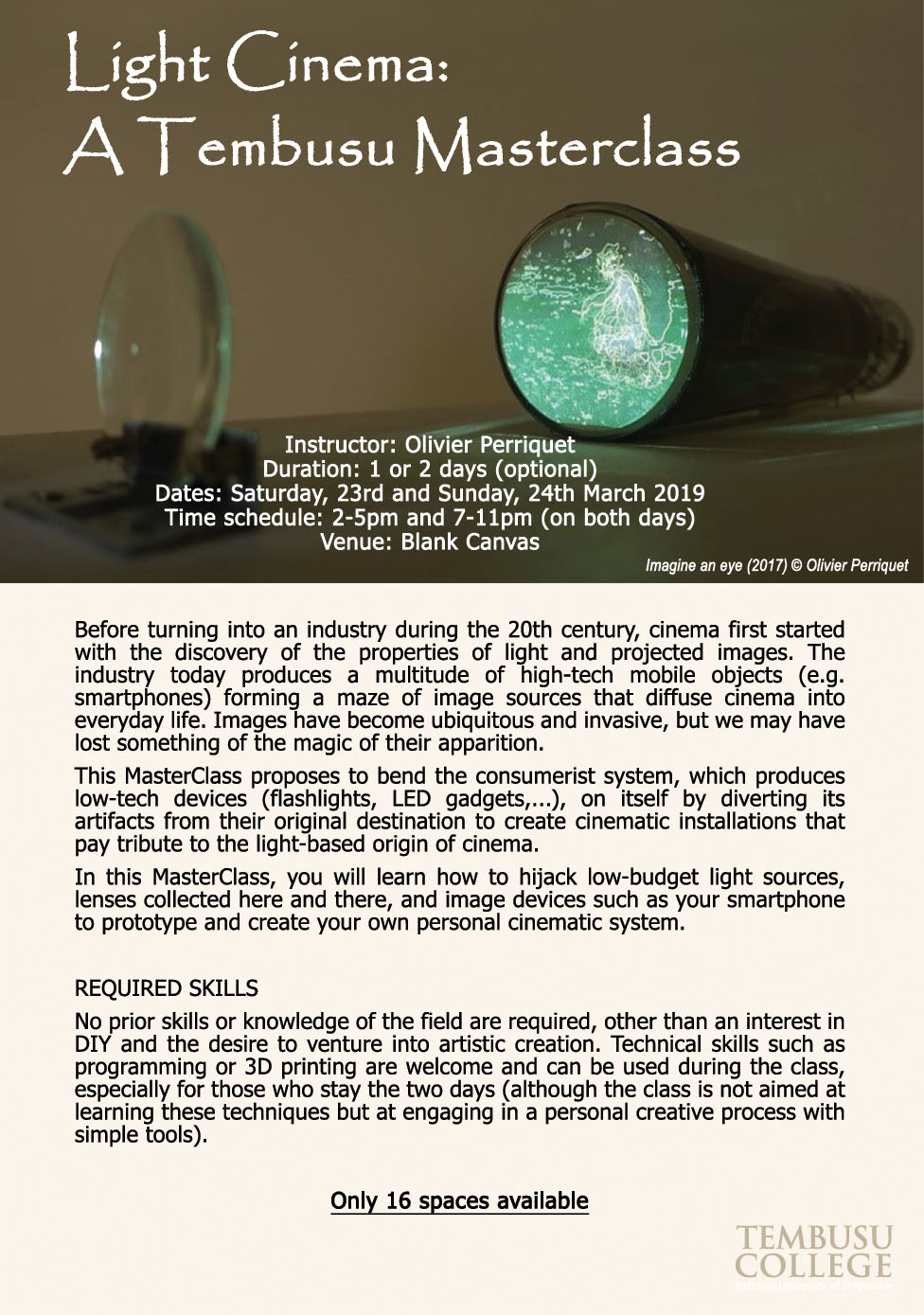
23 March and/or 24 March 2019
MASTERCLASS OUTLINE
In this MasterClass, you will learn how to hijack low-budget light sources, lenses collected here and there, and image devices such as your smartphone to prototype and create your own personal cinematic system.
During the first day, the afternoon session will provide a brief insight into the history of cinema and the physical properties of optics and projection, followed by examples of artworks in the fields of expanded cinema, light sculpture and contemporary art. It will end with a critical discussion and a look at the equipment available for the evening.
The evening is dedicated to experimentations. Alone or in pairs, participants are invited to explore a personal path by developing their own creative ideas, experimenting under the guidance of the instructor with shadows, focus, depth of field, multi-projections, interferences, movements, reflexions, refractions, image projection, screen materials, relation to architecture, etc. Each participant should end the day with a personal finding, or a personal direction to explore further on the second day.
The second day of the MasterClass is optional. It will provide a debriefing of the first day, more examples of artworks and extra time to develop a more elaborate cinematic installation. At the end of the second day, each participant will have created a unique installation exploring the properties of the projected image and light and the group will collectively reflect on the staging of these individual achievements under the supervision of the instructor. Depending on participation, the class will end with an on-site exhibition of the work achieved during the session for the participants who have attended the two days.
REQUIRED SKILLS
No prior skills or knowledge of the field are required, other than an interest in DIY and the desire to venture into artistic creation.
Technical skills such as programming or 3D printing are welcome and can be used during the class, especially for those who stay the two days (although the class is not aimed at learning these techniques but at engaging in a personal creative process with simple tools).
OBJECTIVES
To learn how to prototype creatively by hijacking low-budget technical objects.
To learn by doing the properties of projected light and optics.
To learn about the history of pre-cinema and to discover contemporary artworks of expanded cinema and light sculpture.
To develop one’s personal artistic expression and to be confronted with the organization of a group exhibition.
EQUIPMENT
Equipment will be provided.
Participants are encouraged to bring directed light sources (such as flashlights or lasers pointers for instance), moving gadgets, fans, lenses, small mirrors, old films (super 8, slides) from their own possessions.


